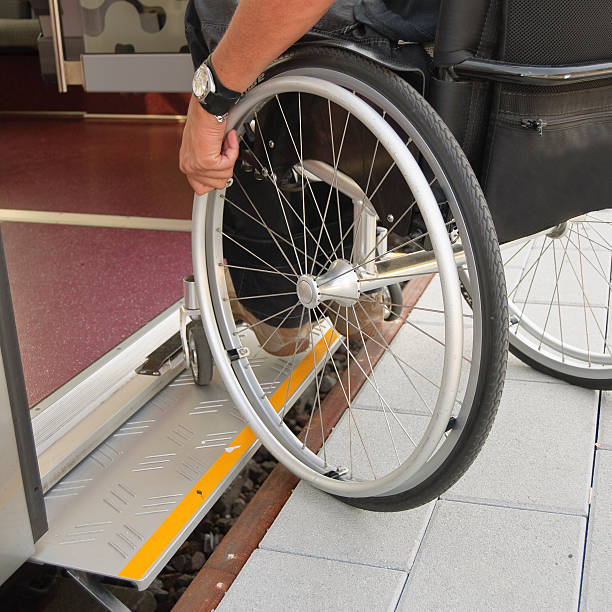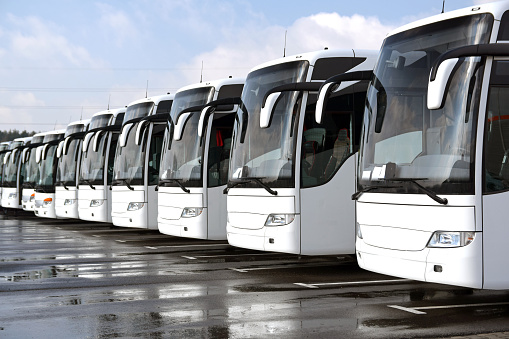Travelling alone can be one of the most exciting things we ever do – an opportunity to learn more about ourselves and grow in confidence and independence.
But for people with additional accessibility requirements, the idea of solo travel can be daunting. This was the case before the pandemic and the addition of new obstacles and complexities added to the travel experience. Since the pandemic, we have heard how worried people are about travelling, and how this can undermine people’s confidence in attempting to tackle it alone. If you are someone with particular access needs who likes to travel but has been putting it off, you may now be making future plans to make up for lost time.
This article is here to offer practical advice and resources for disabled people travelling alone, mainly for longer overland trips and short adventures, but also for the kinds of trips we have to do often and aren’t just for fun.
Solo rail journeys
Travelling by train, when things work as they should, is its own specific pleasure, a way of slowing things down and seeing more of the place you’re travelling in than you would be able to via other means.
Accessible rail travel for solo UK passengers
The UK’s rail network connects every corner, serving over 2,500 stations and offering fantastic opportunities for the solo traveller.

There are a number of provisions in place that solo rail passengers with accessibility requirements should be aware of when travelling in the UK:
- It is a legal requirement in the UK for all train operating companies (ToCs) to make trains accessible to all passengers.
- There are detailed design standards in place to make stations and trains accessible.
- Holders of a Disabled Persons Railcard get ⅓ off adult rail fares on the National Rail network.
- ToCs should be able to offer flexible travel arrangements, as well as pre-arranged assistance requests. Turn Up and Go is a service running alongside assistance planned in advance, so it is possible to make spontaneous trips and expect to receive the assistance that you need. (That said, if possible we still recommend that assisted journeys are planned in advance.)
To find out more about these schemes and requirements, read our post on assisted train travel in the UK.
Requesting assisted rail journeys can be done by phone (calls for free can be made to National Rail on 0800 0223720), and also now by app – if you haven’t already, download the Passenger Assistance app to arrange your assisted rail journey. Click here for the iOS download, or here for Android.
Travelling by railway is a good place to start for solo travellers, due to the relative ease of planning journeys confidently in advance. Trains in the UK also typically have audio announcements about upcoming and current stops as standard, which can make rail travel much easier for blind and partially-sighted travellers than travelling by bus.
Accessible rail travel into Europe
Getting to Europe by train isn’t always the first-choice travel method, but train travel has advantages over air travel – especially in light of how airports and travel arrangements have to be navigated during the pandemic.
Rail travel into Europe via Eurostar works in a similar way to booked UK rail travel. Unfortunately, assisted journeys can not be booked in their own right, but they can be arranged via direct contact with Eurostar. All Eurostar trains have a space for people travelling with wheelchairs, with all spaces next to wheelchair accessible toilets with push-button access.
If you have accessibility requirements that are not wheelchair-related then tickets can be booked through the normal Eurostar booking platform. You’ll then have to contact Eurostar Assist to reserve additional support for when you arrive at the station. Eurostar has a good reputation for accessibility, and journeys into Europe from St Pancras are likely to be some of the most comfortable rail experiences for solo passengers you can find.
Once you’re in Europe, accessible travel arrangements will vary, depending on which countries you’re travelling in:
- France’s train operator, SNCF, have a comprehensive support system call Accès Plus. Where needed, solo travellers can expect to be met at the station and also helped to the right seat.
- Germany’s accessibility levels for solo travellers are probably some of the best in Europe, with a lot of investment put into accessible travel technology and design. Train operator Deutsche Bahn offer assistance to solo travellers – more information on this can be found こちらからさらに情報を確認していただけます
- Spain’s map of accessible stations can be found here, and accessibility requests are managed by the Spanish rail company Renfe. The Renfo Atendo app can be used to request assisted journeys.
Travelling alone by coach and bus

Travelling by coach may not exactly sound glamorous, but like rail travel, it can be planned in advance with some confidence, and for solo travellers, it has the additional benefit of being cost-effective. One thing that is worth keeping in mind is that not all bus services provide audio announcements about the stops along their routes. For blind and partially-sighted travellers, you may need to let the bus or coach driver know which stop you intend to alight at when you first board the vehicle so that they can assist you in getting off at the right time.
Much of the UK can be reached by coach, via services like National Express and Megabus, and by local bus services run by companies like First.
While it is a good idea to contact coach company customer services before travelling, it isn’t always necessary to request assistance in the same way as rail travel. Bigger coach stations are typically very accessible for wheelchair users and travellers with guide dogs, with staff members also trained in offering assistance for all accessibility needs. The Sunflower Lanyard Scheme is also supported by National Express and other coach service providers.
Bus journeys can also often be booked in advance, but it can be easier to purchase your ticket from the driver on the day. For wheelchair users, most bus companies use standard wheelchair measurements of 1200mm long and 700mm wide. All single and double-decker buses should now be wheelchair accessible, although some older buses may not have the ability to be lowered, which can be an issue for many wheelchair users. If you’re planning to travel at a busy time or via a busy region where there is a risk that limited wheelchair spaces may already be booked, it is advisable to plan ahead.
Planning ahead for Megabus and National Express
Megabus advise that travellers contact them ahead of buying tickets if they require a wheelchair space on the coach or space to store a wheelchair in the hold, but don’t offer specific guidance for other assistance: https://uk.megabus.com/conditions/passengers-requiring-assistance
National Express offers an assistance card scheme, where you can download and print, or screenshot, journey assistance cards to show to your driver so that you can get any support you need during your journey. Find out more about their accessibility promise here, and download assisted travel cards for your own National Express journey from the following page: https://www.nationalexpress.com/media/3122/assisted-travel-cards.pdf
Bus travel in rural areas
For rural locations, it is advisable to contact the local bus companies to check how accessible their buses are. In some cases travelling alone might be difficult, even with some accessibility provisions in place.
That being said, First – who provide bus services across most of the UK – do offer a guarantee of “Extra Help to Travel” for those who need it. You can download an Extra Help to Travel card from their website which shows the driver that you may need assistance. That could be extra time to get to your seat before they pull away, having the driver face you when speaking so that you can lip read, or something else entirely. Find out more at https://www.firstbus.co.uk/help-and-support/extra-help-travel
Planning tips and resources
Travelling alone is mostly a question of planning and being confident in what to expect from your journey. A concern shared by many Passenger Assistance users, perhaps especially those with visual impairments, is to do with the accessibility of travel planning platforms and websites, which are not always built to be accessible by all users.
Dale Reardon, CEO of Australian business Travel for All, gave us this perspective: “The worst problem I face when trying to plan and book a trip, be that something as simple as a café or restaurant booking up to a hotel reservation, is in relation to using a website that is inaccessible. As a blind person I use a screenreader software program to let me access my computer, surf the internet, read the computer screen to me, navigate websites etc. However so many websites, I reckon 90%, have inaccessible booking forms, enquiry forms, reservation forms, enquiry forms, pricing and availability pages… sometimes I can’t even use the contact form as you need to select dates to submit the form and I can’t use those controls either”.
Unfortunately, there is a lot to be done to improve the accessibility of web-based services, as well as mobile apps. That said, if you have selected a website to book travel and it has been built to comply with W3C Web Accessibility Guidelines to at least Conformance Level “AA”, then it should be accessible to most users. Many larger websites, for example, the National Express website, are built to Conformance Level “AAA”, which meets high accessibility standards.
The usability of apps and websites you use to plan solo will go a long way towards making the overall experience a positive one. Some more general tips we have heard from solo travellers include:
- Carry a portable charger around – for many rail travellers with additional access requirements a working phone can be beneficial.
- Accessible facilities in well-known places for food and coffee – for example Mcdonald’s and Starbucks, are typically reliable as well as relatively easy to find.
- Prepare service dogs for new situations. Service dogs are very highly trained, but it still can be a good idea to go for test runs.
- There are support networks out there that can be incredibly helpful for solo travellers – these can range to local Facebook groups, to aid organisations like Germany’s Bahnhofsmission offering independent help at more than 100 German railway stations.
- Travellers with reduced mobility are entitled to support and to be treated in the right way. Learning about what you are entitled can make for a more confident travel experience, especially when going outside of the UK. Information on EU rights for travellers with reduced mobility can be found here.
Travel alone with confidence

It can be tremendously beneficial to travel alone, including for people with accessibility requirements. It’s understandable to have concerns but we hope that with the right resources the prospect of solo travel, either for a one-off adventure or as a regular part of daily life, can be made less daunting than it initially seems.
For more information and support around accessible travel in the UK and abroad, explore the Euan’s Guide website for first-hand disabled access travel and tourism reviews. AccessAble is another useful website, offering clear information on facilities and access at venues in the UK and Ireland.
Explore our recent blog posts on wheelchair-friendly walks in Yorkshire and wheelchair-friendly walks in Derbyshire for more travel inspiration.